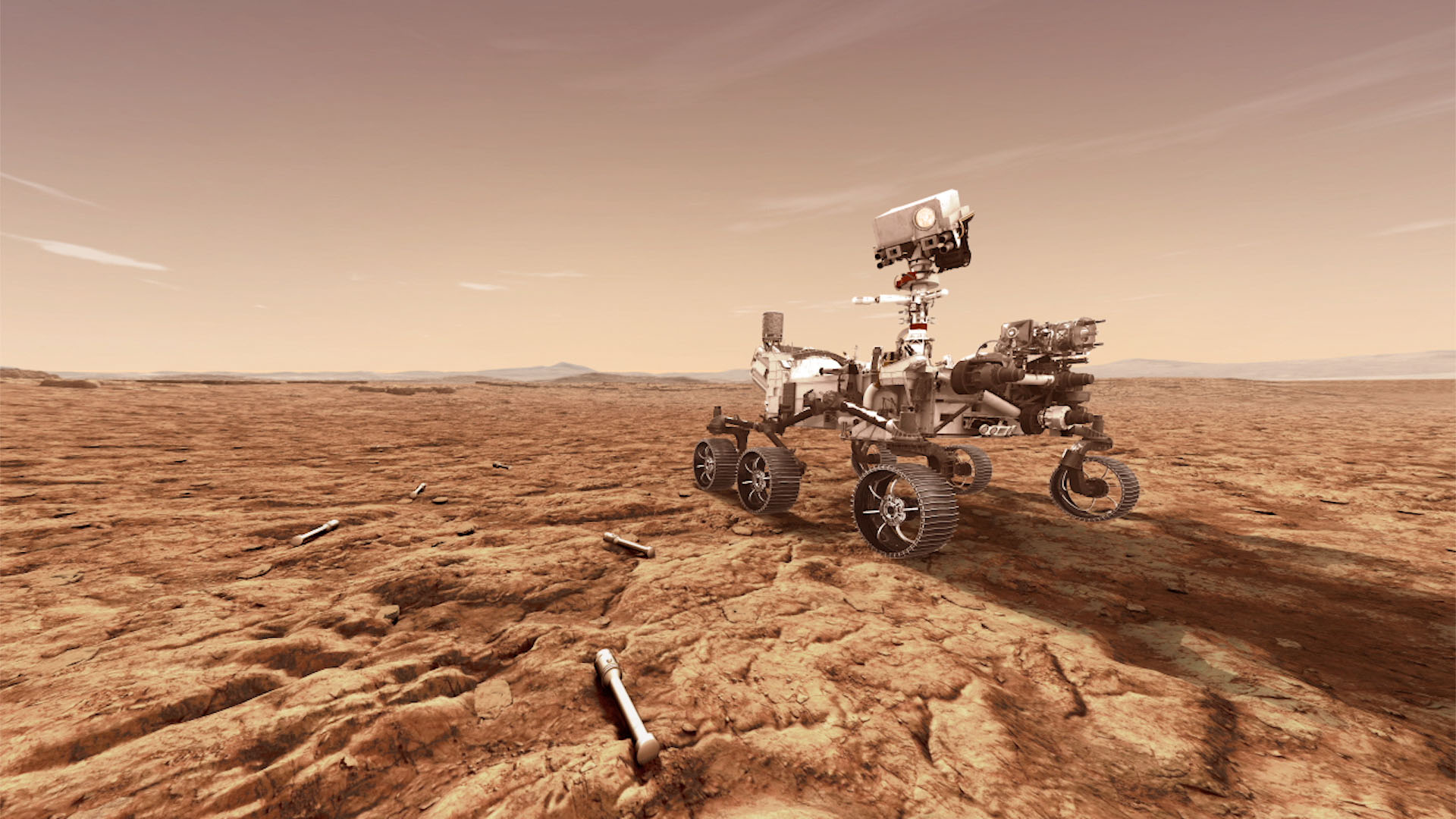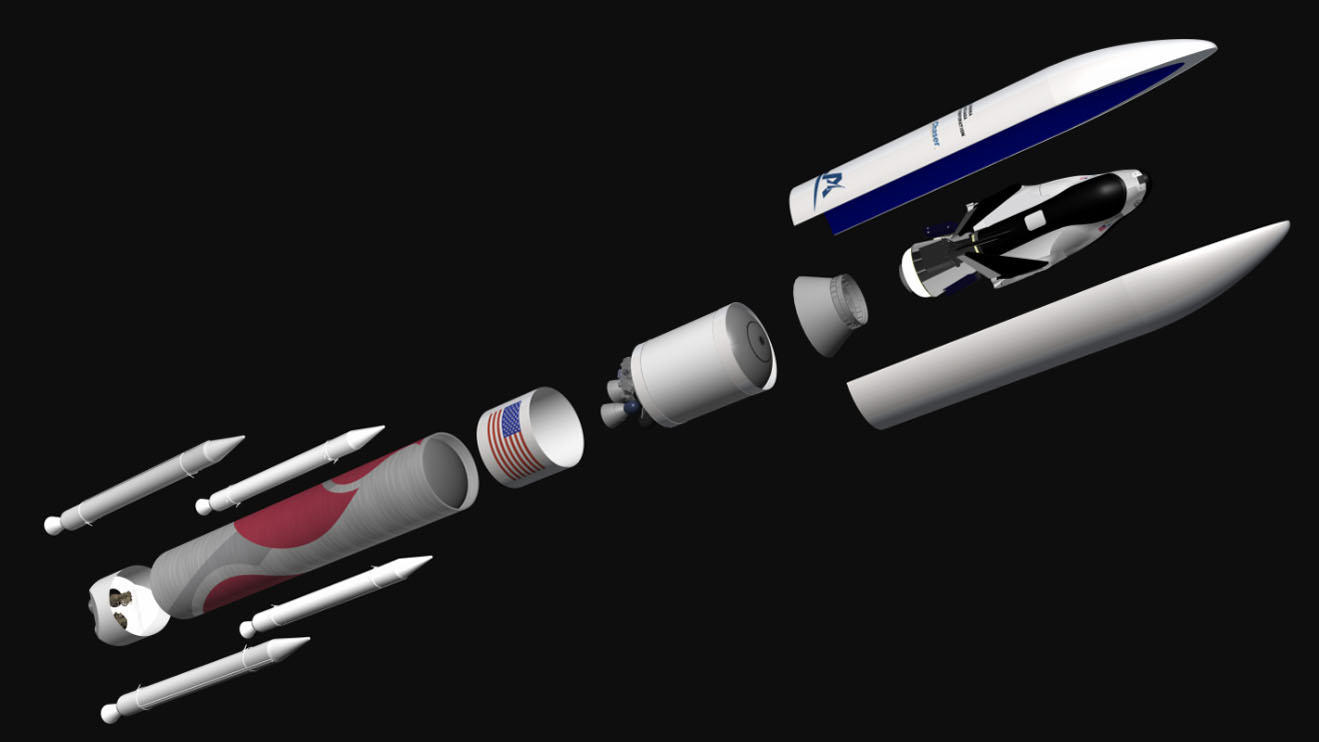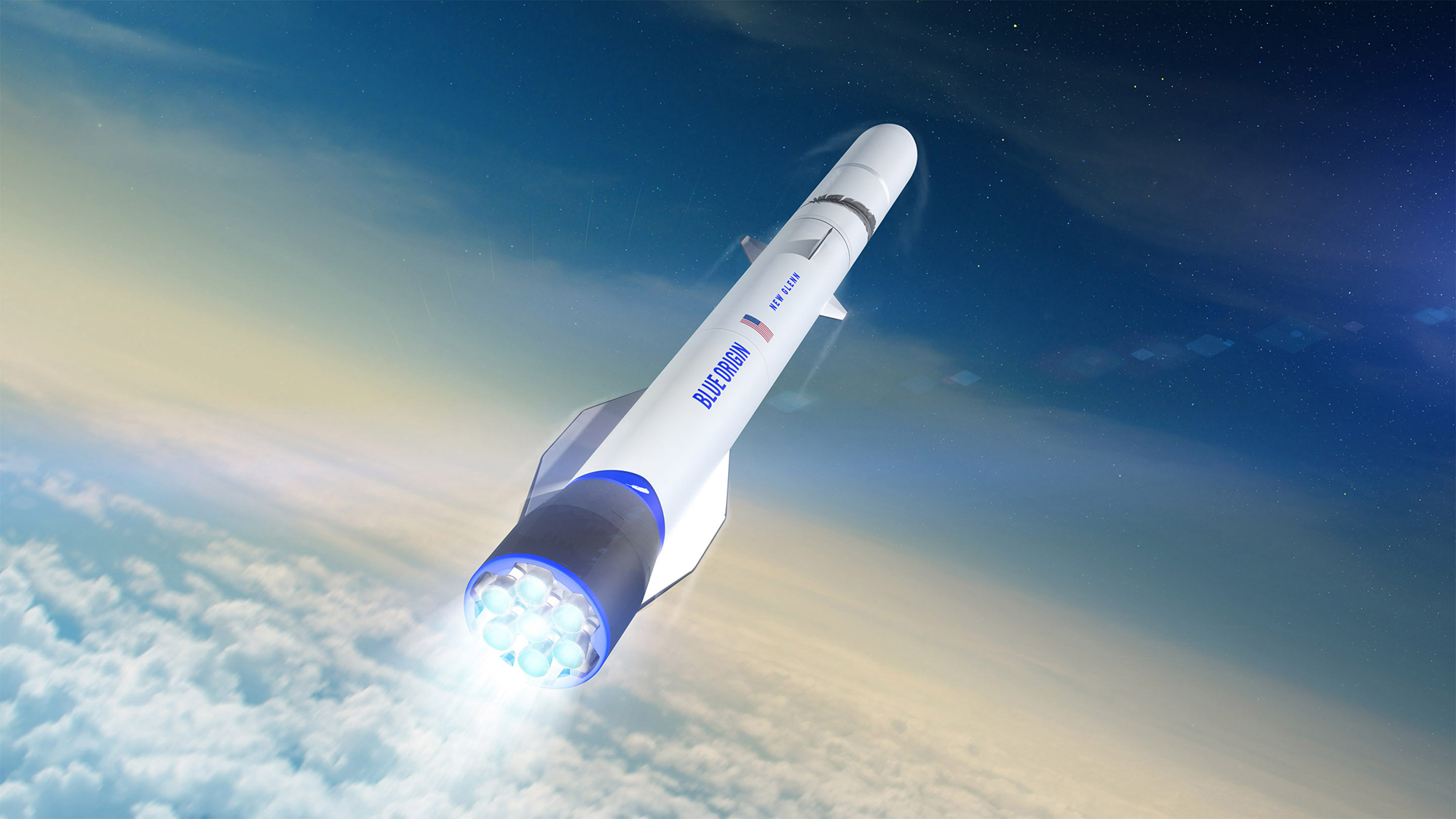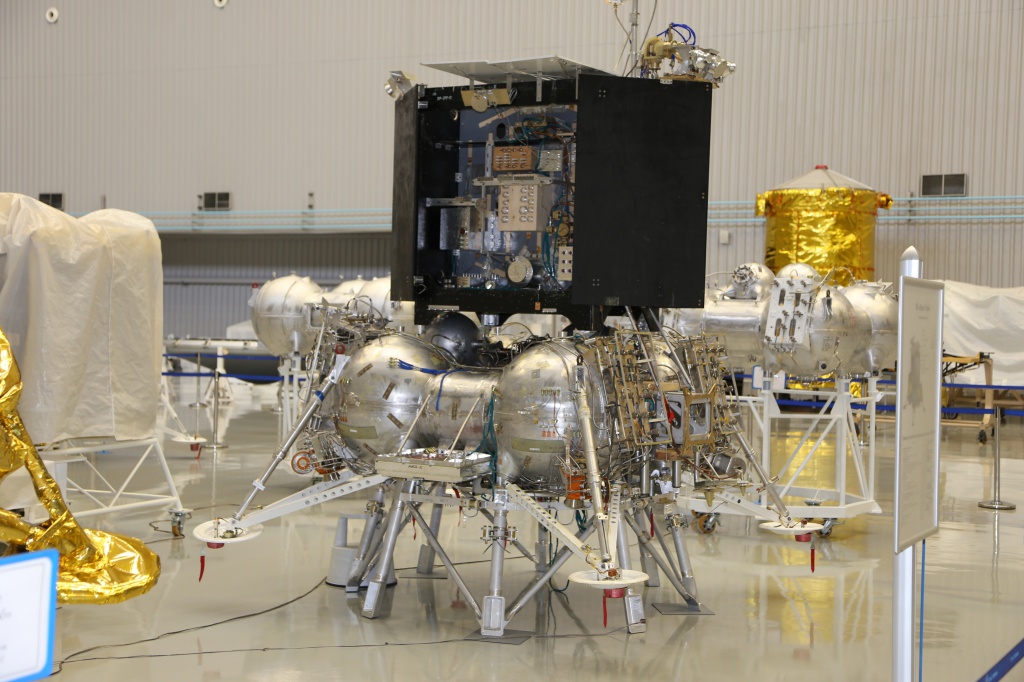These are the space missions to watch in 2021

While 2020 was a challenging year for the space industry (and everyone else) amid the coronavirus pandemic, a bunch of exciting missions that will launch or arrive at their destination in 2021 continued to move forward.
From Mars to asteroids, robots, humans and much more, we'll see space exploration continue to expand across the solar system. We'll also see some new rockets take flight from companies like Firefly Aerospace and Relativity Space.
Here's what we're looking forward to:
1) Three countries arrive at Mars
The space industry is rapidly expanding and the Red Planet is the hottest destination for missions, it seems. NASA will continue its long-running search for life with the Perseverance rover, which will cache Martian samples for eventual analysis on Earth and test out the first-ever Mars helicopter, called Ingenuity.
China's ambitious Tianwen-1 mission, the first Mars mission for the country, will see an orbiter, lander and rover all explore the Red Planet. The United Arab Emirates also sent its first mission, the Hope orbiter, to Mars to inspire the "next generation."
2) Starliner's second uncrewed test mission
Boeing had a number of issues when its commercial crew Starliner Orbital Test Flight-1 (OFT-1) launched into space in 2019 — it didn't reach the International Space Station as planned and both NASA and the company investigated and implemented some lessons learned for another try in 2021.
Boeing hopes to launch a second attempt on March 29, 2021 after addressing the software issues that prevented Starliner from reaching its destination the first time. If Boeing succeeds, this will make Starliner the second commercial crew spacecraft certified to bring astronauts to orbit, after SpaceX's Crew Dragon.
Breaking space news, the latest updates on rocket launches, skywatching events and more!
3) Starliner crew test flight
Assuming that Starliner passes its uncrewed flight test, Boeing plans to send up three astronauts to the International Space Station no earlier than June 2021. NASA astronauts Mike Fincke, Nicole Mann and Barry "Butch" Wilmore will fly with Boeing's first crewed test flight. Boeing astronaut Chris Ferguson was originally assigned to command the mission, but stepped down from the oft-delayed flight for personal reasons in October 2020.
4) Japanese rover rides ULA's 1st Vulcan rocket
Japan's first moon rover, called Yaoki, will take flight aboard the rookie mission for United Launch Alliance's new Vulcan Centaur rocket in 2021. The new booster will phase out the Russian-made engines that powered ULA's long-running Atlas line, replacing them with Blue Origin-made engines.
Yaoki will fly to the moon along with the Pittsburgh-based company Astrobotic's Peregrine lander on a mission sponsored by NASA's Commercial Lunar Payload Services (CLPS) program. If the mission goes to plan, the cremated remains of noted science fiction writer Arthur C. Clarke will be deposited on the moon.
5) Debut of Blue Origin's New Glenn rocket
Washington state-based company Blue Origin will send its first orbital rocket aloft in 2021, if all goes to plan. Named New Glenn after the NASA Mercury astronaut John Glenn, the rocket can send up to 14 tons (13 metric tons) to geostationary orbit and 50 tons (45 metric tons) to low Earth orbit.
NASA and Blue Origin recently announced the rocket will be added to NASA's fleet of commercial launch vehicles; NASA already has used Blue Origin's suborbital rocket New Shepard (named after NASA Mercury astronaut Al Shepard.)
6) James Webb Space Telescope launches on Oct. 31
NASA's ambitious James Webb Space Telescope (JWST), which scientists hope will reveal more about exoplanet atmospheres and the early universe, has already been delayed many years from its original launch date in 2007. But, despite these delays, the telescope is almost ready now and final testing is being readied on some of its more complex parts, such as its sunshield.
July 2020, the pandemic forced JWST to delay seven months further into 2021, from March to October.. However, while the telescope may make this possible date, NASA wants to get the telescope right and will take the time it needs, the agency says.
7) NASA's Lucy mission launch to eight asteroids
An ambitious new NASA mission called Lucy should launch in October or November to study eight space rocks over nearly a decade.
The spacecraft will be the first from NASA to visit Jupiter's Trojan asteroids, which orbit the sun in two clusters; one group is behind Jupiter and one is ahead of it. Lucy will also pass by a main-belt asteroid on its way to the huge gas giant planet.
8) NASA's SLS megarocket launches 1st moon mission
If NASA's ambitious Space Launch System megarocket can clear its testing hurdles this year and construction is completed on time, the agency's Artemis I mission will fly around the moon after a launch in November 2021.
This will be the first launch for SLS and the second for NASA's Orion spacecraft, which first had an uncrewed space mission back in 2014. Artemis I is key to NASA's plans to land humans on the moon, as the agency plans a crewed orbital moon mission in 2023 and then a crewed landing in 2024. Meeting the landing deadline, however, may also be contingent on NASA receiving more money for its human landing system, administrator Jim Bridenstine has warned Congress.
9) Russia lunar landing mission at south pole
The Russian lander Luna-25 may be the first Russian craft to reach the moon's surface since it was part of the Soviet Union. Russia plans to launch the moon mission in 2021 with nine instruments on board.
Luna-25 will touch down at the moon's south pole to research the lunar regolith and exosphere (atmosphere). This region is under consideration for crewed moon missions by NASA and other space agencies in the future. The Soviet Union sent several uncrewed missions to the moon between the 1950s and 1970s, including the first spacecraft to hit the surface (Luna 2 in 1959), the first spacecraft to soft-land (Luna 9 in 1966) and the first robotic lunar rover (Luna 17/Lunokhod 1 in 1970), among other milestones.
10) Astroscale space junk cleanup test
The End-of-Life Services by Astroscale-demonstration (ELSA-d) mission is set to launch in March 2021 on a Russian Soyuz rocket from Kazakhstan in a bid to deal with the growing problem of space junk in orbit.
The dual spacecraft mission includes a 385-lb. (175 kilograms) "servicer" and a 37-lb. (17 kg) "client" that will use rendezvous technology and a magnetic capture mechanism in orbit. Orbital debris is expected to increase in the coming years as more companies send tiny spacecraft into low Earth orbit.
11) Private astronauts fly to International Space Station
SpaceX plans to send astronauts with Houston-based company Axiom Space into space in 2021 for a mission to the International Space Station.
The trip will likely feature eight days at the station and two days of travel time. While tourists have visited the space station before, Axiom notes this will be "the first-ever fully private" trip to the station. NASA hopes to open up the space station for even more commercial opportunities in the future, although Congress has not given the agency as much money as desired in fiscal 2021 for these plans.
12) Moon landing by Houston's Intuitive Machines
Houston-based company Intuitive Machines plans to fly the robotic Nova-C lander on a NASA-sponsored flight in 2021, launching on a SpaceX Falcon 9 rocket. The lander will send five NASA Commercial Lunar Payload Services (CLPS) payloads to the surface and will send data to our planet for 13.5 Earth days.
Other customer payloads will fly aboard Nova-C as the lander still has capacity for the mission. "Our partnership with Intuitive Machines is a great example of two private companies working together with NASA to advance space exploration," SpaceX President Gwynne Shotwell said in a statement.
13) SpaceX's 1st commercial Starship launch to space
After several ambitious tests in 2020, SpaceX may send its first commercial payload aloft on a Starship spacecraft in 2021. Jonathan Hofeller, SpaceX's vice president of commercial sales, said back in June 2019 that the company was talking with several telecom companies for that launch opportunity.
Even if SpaceX doesn't make that tentative date, however, it is moving forward quickly with Starship development, including an ambitious maneuvering test in December 2020. The company plans to eventually use Starship for crewed Mars missions.
14) New rockets take flight
The United Launch Alliance, Blue Origin and SpaceX aren't the only companies planning to launch new rockets in 2021. Several small-satellite launch companies also hope to reach orbit in the coming year, including Firefly Aerospace, Relativity Space and Virgin Orbit.
Texas-based Firefly Aerospace initially hoped to launch its first Alpha rocket, a two-stage booster for smallsat launches, in 2020 but is now aiming for multiple missions in 2021. In addition to the Alpha rocket's debut launch from Vandenberg Air Force Base in California, Firefly plans to launch at least two more missions in 2021 under a new launch agreement with Adaptive Launch Services.
Relativity Space is a startup in Los Angeles, California building the Terran 1 rocket, a completely 3D-printed booster that will launch small satellites from pads at both Cape Canaveral, Florida and Vandenberg. The company is expected to launch its first flight in 2021 and recently received its second launch contract from NASA among other commercial agreements.
Virgin Orbit is a small-satellite launch company founded by British billionaire Sir Richard Branson that spun out of the entrepreneur's Virgin Galactic space tourism company. Virgin Orbit is building LauncherOne, an air-launched rocket for smallsat launches, and has already launched one test flight that did not reach space.
The company had hoped to launch a second test flight of LauncherOne in December 2020, but the ongoing coronavirus pandemic has delayed the flight.
Follow Elizabeth Howell on Twitter @howellspace. Follow us on Twitter @Spacedotcom and on Facebook.

Elizabeth Howell (she/her), Ph.D., was a staff writer in the spaceflight channel between 2022 and 2024 specializing in Canadian space news. She was contributing writer for Space.com for 10 years from 2012 to 2024. Elizabeth's reporting includes multiple exclusives with the White House, leading world coverage about a lost-and-found space tomato on the International Space Station, witnessing five human spaceflight launches on two continents, flying parabolic, working inside a spacesuit, and participating in a simulated Mars mission. Her latest book, "Why Am I Taller?" (ECW Press, 2022) is co-written with astronaut Dave Williams.





